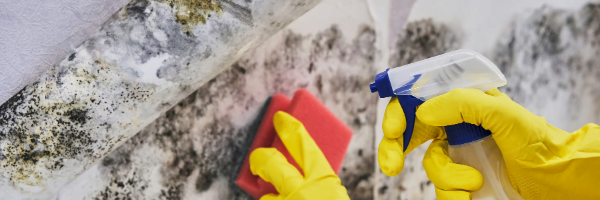Screening Tests for Biotoxin Illness
Visual Contrast Sensitivity testing measures your ability to see details at low contrast levels and is often used as a nonspecific test of neurological function. The results of the test can then be used as an aid in the diagnosis of visual system dysfunction.
Symptoms from 13 different clusters of symptoms are commonly found in patients with mold exposure. A positive cluster analysis for mold or biotoxin related illness is the presence of 8 or more of 13 clusters.
Cluster Analysis categories:
1. Fatigue
2. Weak, assimilation, aching, headache, light sensitivity
3. Memory, word finding
4. Concentration
5. Joint, AM stiffness, cramps
6. Unusual skin sensations, tingling
7. Shortness of breath, sinus congestion
8. Cough, thirst, confusion
9. Appetite swings, body temperature regulation, urinary frequency
10. Red eyes, blurred vision, sweats, mood swings, icepick pains
11. Abdominal pain, diarrhea, numbness
12. Tearing, disorientation, metallic taste
13. Static shocks, vertigo
Finding a combination of VCS deficits and positive cluster analysis results in a 98.5% accuracy shown for chronic inflammatory response syndrome (CIRS) with a 1.5% total source of abnormalities in false positives plus false negatives.
Lab Tests for Mold Exposure
- Mycotoxin testing – Great Plains Laboratory, Real Time Labs or Vibrant Wellness Mycotoxin
- Environmental Mold testing – ERMI or HERTSMI through Envirobiomics or Myometrics ERMI
Nasal swab for MARCoNS
Patients with mold or biotoxin illness often have a chronic, low grade infection in the nasal passages with a type of bacteria called Staph aureus. This pathogen is often resistant to multiple antibiotics, thus being referred to as MARCoNS (multiple antibiotic resistant coagulase negative staphylococci). A simple nasal swab is done to culture for this infection. The testing is done through MicrobiologyDx.
Serum Test Results for CIRS
Mold and other biotoxins may initiate a complex reaction in the body that sets off a series of biochemical alterations called chronic inflammatory response syndrome (CIRS). Standard reference ranges may not reflect significant alterations in these markers. Below is a list with more “functional” reference ranges along with result categories that are typical with CIRS. A diagnosis of CIRS is likely with 4 of the 8 biomarkers being outside the noted ranges.
Usually low values
- MSH (35-81)
- VIP (23-63)
Usually high values
- MMP9 (85-332)
- TGF beta 1 (< 2380)
- C4a (0-2830), C3a
High or low values
- VGEF (31-86)
Dysregulated values, e.g. high ACTH with low/normal cortisol
- ACTH (8-37) / Cortisol (std range)
- ADH (1.3-13.3) / Serum osmolality (280-300)
Genetics
Genetic variations that make one susceptible to mold and biotoxin illnesses are estimated to exist in about 25% of people. These are specific to the genes that code for self recognition markers that help the immune system function properly. The test is done through Labcorp and is called HLA A,B,C,DR1,3,4,5, DQ Intermediate Resolution. (Test No 167096, CPT: 81370). Specific genotypes increase susceptibility to molds, borrelia, MARCoNS, or combinations.
| DRB1 | DQ | DRB3 | DRB4 | DRB5 | |
| Multisusceptible | 4 | 3 | 53 | ||
| 11/12 | 3 | 52B | |||
| 14 | 5 | 52B | |||
| Mold Susceptible | 7 | 2/3 | 53 | ||
| 13 | 6 | 52A, B, C | |||
| 17 | 2 | 52A | |||
| 18* | 4 | 52A | |||
| Borrelia, post Lyme Syndrome | 15 | 6 | 51 | ||
| 16 | 5 | 51 | |||
| Dinoflagellates | 4 | 7/8 | 53 | ||
| Multiple Antibiotic Resistant Staph Epidermis (MARCoNS) | 11 | 7 | 52B | ||
| No recognized significance | 8 | 3, 4, 6 | |||
| Low-risk Mold | 7 | 9 | 53 | ||
| 12 | 7 | 52B | |||
| 9 | 9 | 53 |
GENIE (Genomic Expression: Inflammation Explained)
GENIE uses differential gene expression to reflect abnormalities in gene functioning in illnesses characterized by chronic fatigue. Activation or suppression of certain genes play a role in the initiation and continuation of chronic illness. Testing is done through ProgeneDX.


